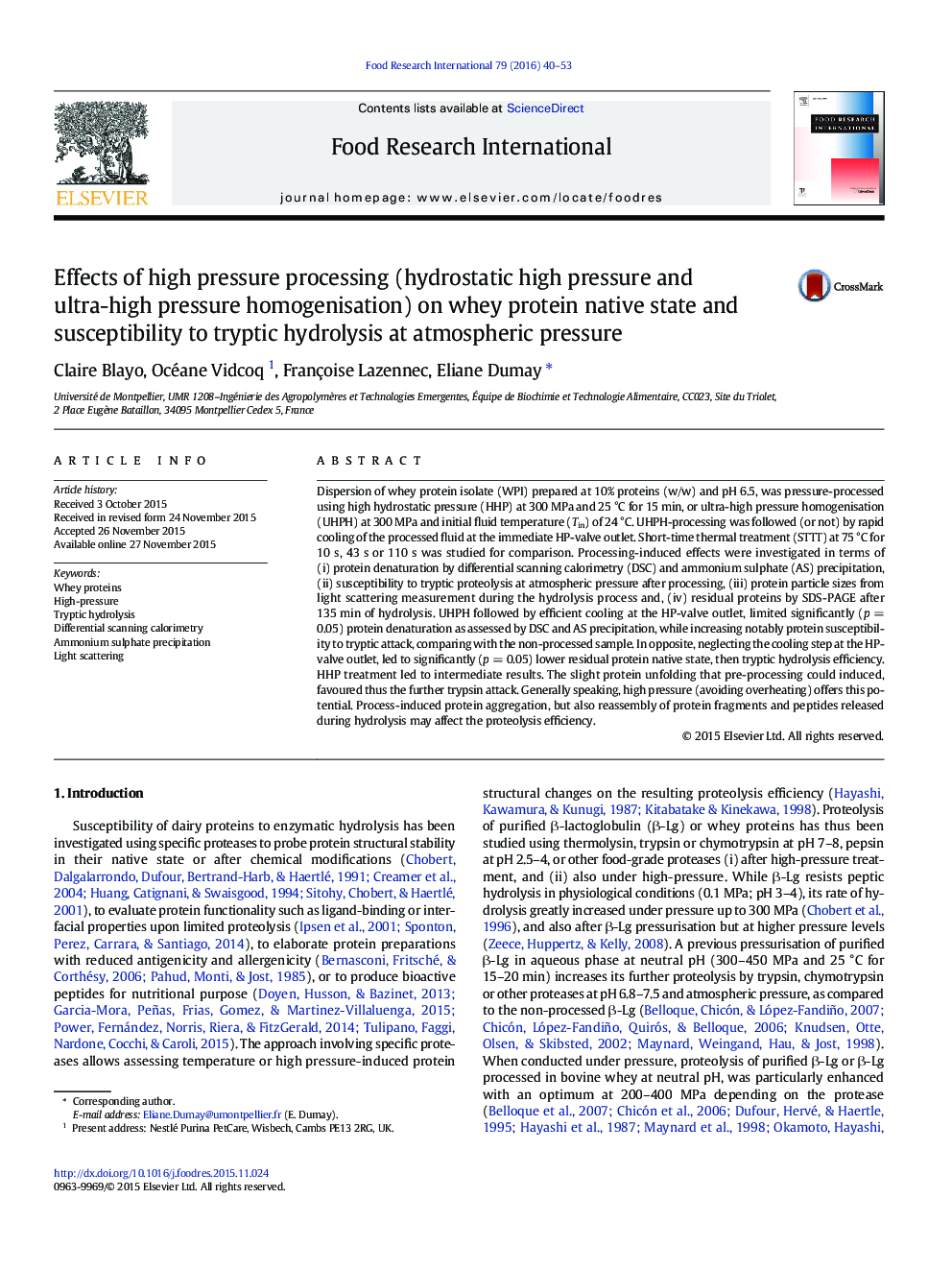| کد مقاله | کد نشریه | سال انتشار | مقاله انگلیسی | نسخه تمام متن |
|---|---|---|---|---|
| 6395042 | 1628469 | 2016 | 14 صفحه PDF | دانلود رایگان |
- Effect of pressure- or heat-processing on WPI native state was rightly done by DSC.
- UHPH at 300Â MPa using efficient cooling limited notably whey protein denaturation.
- Limiting heating allowed increase in WPI susceptibility to further tryptic attack.
- High pressure (isostatic or dynamic) favours β-Lactoglobulin tryptic hydrolysis.
- UHPH may be proposed as a controlled and continuous process to prepare proteolysates.
Dispersion of whey protein isolate (WPI) prepared at 10% proteins (w/w) and pH 6.5, was pressure-processed using high hydrostatic pressure (HHP) at 300 MPa and 25 °C for 15 min, or ultra-high pressure homogenisation (UHPH) at 300 MPa and initial fluid temperature (Tin) of 24 °C. UHPH-processing was followed (or not) by rapid cooling of the processed fluid at the immediate HP-valve outlet. Short-time thermal treatment (STTT) at 75 °C for 10 s, 43 s or 110 s was studied for comparison. Processing-induced effects were investigated in terms of (i) protein denaturation by differential scanning calorimetry (DSC) and ammonium sulphate (AS) precipitation, (ii) susceptibility to tryptic proteolysis at atmospheric pressure after processing, (iii) protein particle sizes from light scattering measurement during the hydrolysis process and, (iv) residual proteins by SDS-PAGE after 135 min of hydrolysis. UHPH followed by efficient cooling at the HP-valve outlet, limited significantly (p = 0.05) protein denaturation as assessed by DSC and AS precipitation, while increasing notably protein susceptibility to tryptic attack, comparing with the non-processed sample. In opposite, neglecting the cooling step at the HP-valve outlet, led to significantly (p = 0.05) lower residual protein native state, then tryptic hydrolysis efficiency. HHP treatment led to intermediate results. The slight protein unfolding that pre-processing could induced, favoured thus the further trypsin attack. Generally speaking, high pressure (avoiding overheating) offers this potential. Process-induced protein aggregation, but also reassembly of protein fragments and peptides released during hydrolysis may affect the proteolysis efficiency.
Journal: Food Research International - Volume 79, January 2016, Pages 40-53
